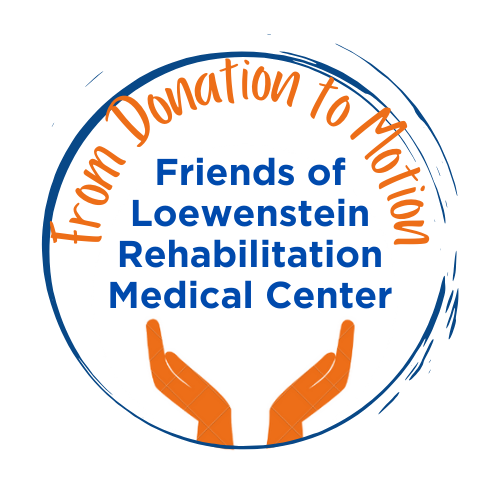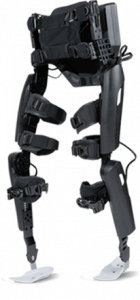The device and its benefits
ReWALK is an innovative development based on robotic technology, which can help significantly wheelchair-bound patients suffering from lower body paralysis. The device consists of a suit that the patient wears on his lower limbs and back. The suit is operated by batteries and includes an array of sensors, a computerized control system, and a sophisticated emergency and safety system.
The device allows higher-quality walking on crutches than can be achieved with the long braces used in treatment today, in a pattern that more closely resembles normal walking, even when the legs are completely paralyzed.
The device also allows patients with paralyzed legs to climb stairs.
The reduced effort required when walking with the ReWalk device and the possibility of using it over time are likely to help improve physical fitness and reduce the damage that load may cause to joints and soft tissues. In this way, it may contribute to the patients’ health as well as to their mobility.
Spinal cord injury: Characteristics of the injury
Spinal cord injuries are caused by trauma sustained in wars, terrorist acts, accidents, falls, and sports incidents, or as a result of diseases such as intervertebral disc herniation, spinal canal stenosis, infections, tumors, and vascular diseases of the spine. Spinal cord injury severs the nerves that connect the brain with various body organs. As a result, many physical disorders can occur, including paralysis, loss of sensation, respiratory disorders, and urinary incontinence. Physical disorders are accompanied by functional ones that may also manifest in the inability to stand and walk.
Individuals with spinal cord injuries often need a wheelchair to get around, which prevents them from performing activities in a standing position, or moving in narrow places or on stairs.
Patients with spinal cord injuries: Rehabilitation at Loewenstein Hospital
Treatment at the Loewenstein Spinal Rehabilitation Department is managed by specialist physicians and therapists with unique experience in the field. The treatment minimizes physical complications and helps achieve optimal functioning. Patients with spinal cord injuries achieve a life expectancy close to that of the general population, maximum possible neurological recovery, optimal integration into daily life in the community, and a good quality of life.
Even people whose legs are completely paralyzed because of spinal cord injury can achieve walking with the aid of the rehabilitative treatment provided in the Spinal Rehabilitation Department. Walking with paralyzed legs requires aids, such as braces and crutches, and intensive therapeutic treatments. Walking recovery therapy is conducted mostly by physiotherapists, and is designed to maintain the range of motion of the leg joints and the flexibility of the back, and especially to practice the acquisition of new movement skills.



